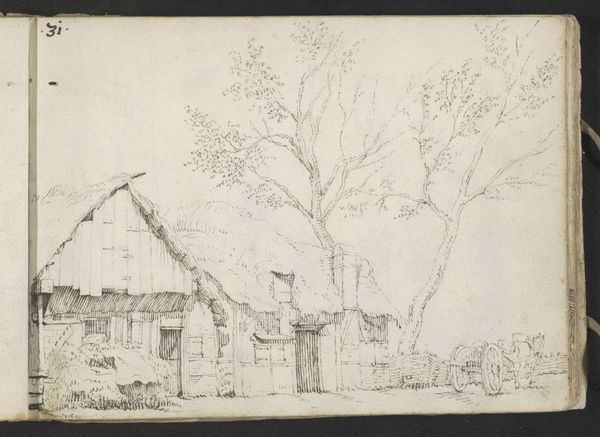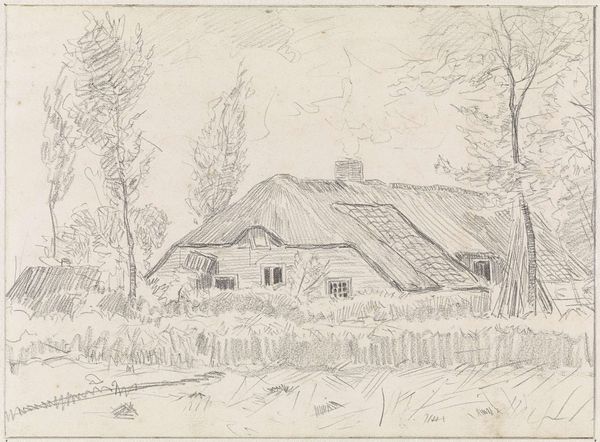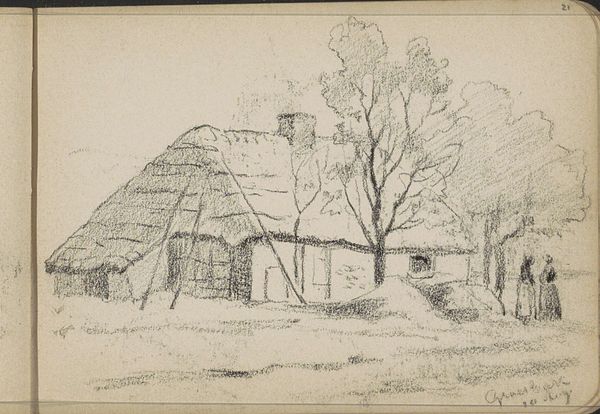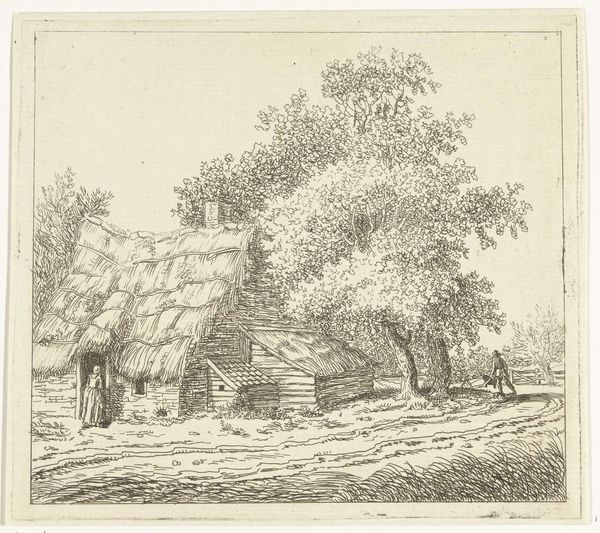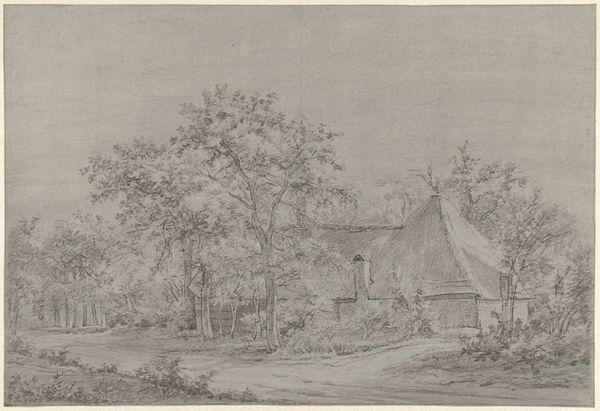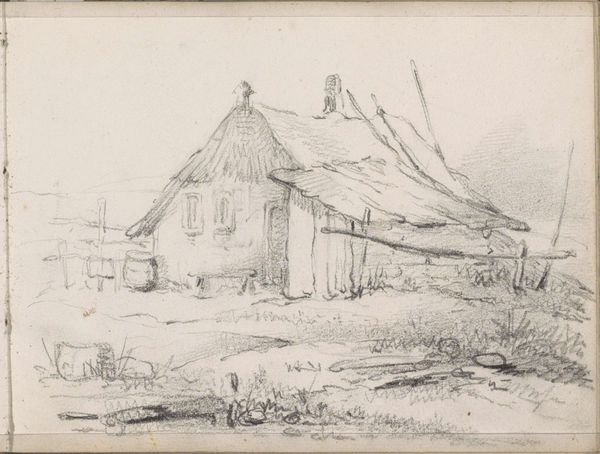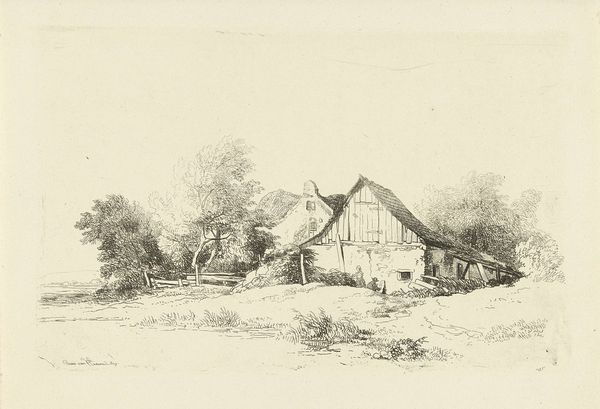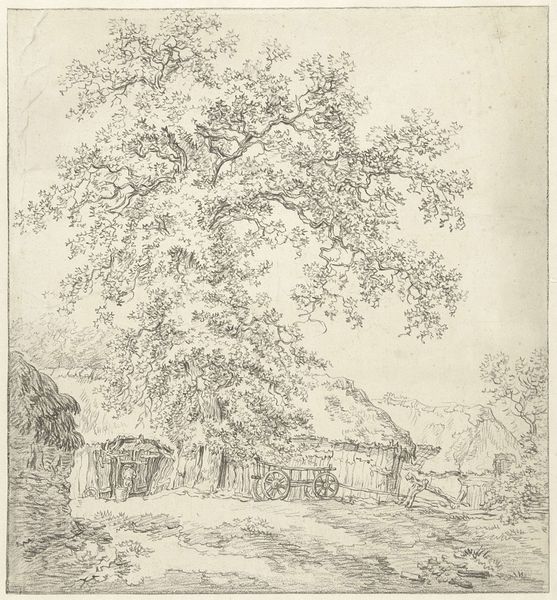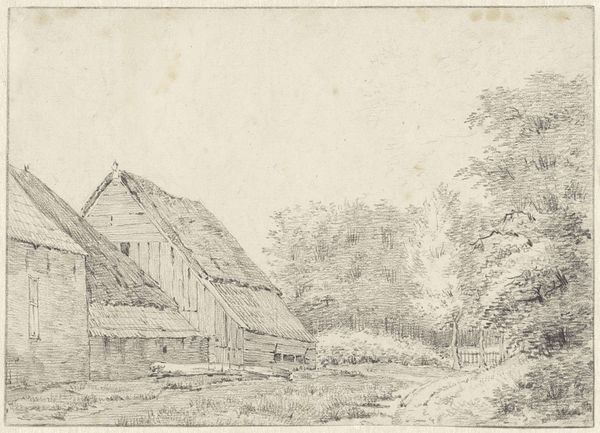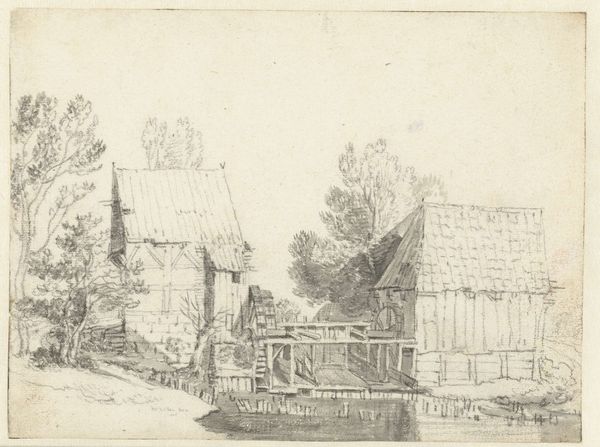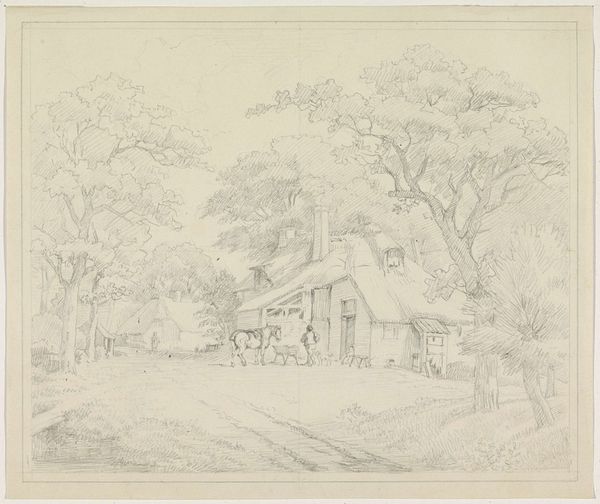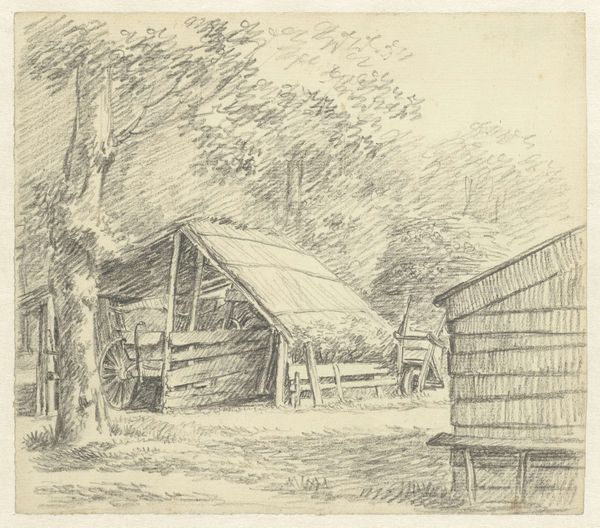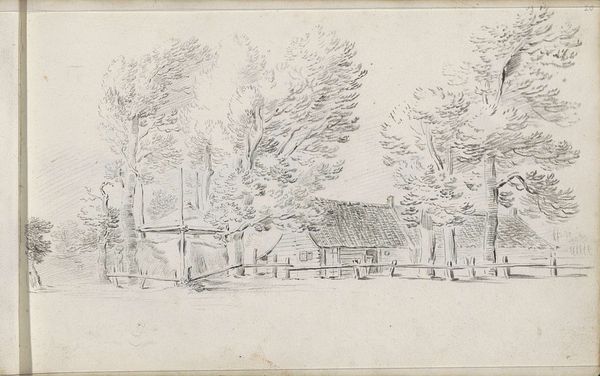
drawing, pencil
#
drawing
#
landscape
#
pencil
#
realism
Dimensions: height 228 mm, width 274 mm
Copyright: Rijks Museum: Open Domain
Editor: Here we have Egbert van Drielst's pencil drawing, "Boerderij in De Wijk in Drenthe," created sometime between 1755 and 1818. I find the simplicity of the scene, the humble farmhouse, quite calming. What do you see in this piece? Curator: I see a potent statement about land ownership and social hierarchy. Drenthe, even then, was a rural province, and these farms were the base of the economic pyramid. This image invites us to consider who owned that land, who worked it, and how their lives were structured by that relationship to the land. Consider also the lack of people; is that intentional? Is it communicating that rural folk and their labor are invisibilized, absent from high culture? Editor: That's interesting! I hadn’t thought about it that way. It felt more like a peaceful escape. So you're saying even a landscape drawing can reflect power dynamics? Curator: Absolutely. Landscape isn't neutral. It's always mediated through a lens of power, class, and even gender. Think about who had the leisure to create and appreciate such images, and who didn’t. How does that inform our reading of it? Are we romanticizing a potentially oppressive system by only seeing "beauty"? Editor: I see what you mean. By looking at the social context, the drawing becomes a prompt to think critically about land and labor. Curator: Precisely. Art offers insight, especially regarding inequalities; we only need to adjust our interpretive frameworks and methodologies. Editor: Thanks, I will never see landscapes the same way again! Curator: And that's the beauty of engaging with art; it forces us to reconsider our perspectives.
Comments
No comments
Be the first to comment and join the conversation on the ultimate creative platform.
